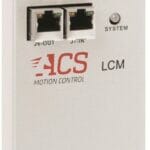Romanian SI, Smartech Automation, designs and delivers open, flexible, data-capable architecture to drive operational optimisation
Connectivity is a vital element of any contemporary industrial operation, no matter what market it serves. Industry 4.0 and big data aside, having access to up-to-date and actionable operational data is essential to extract the best possible performance from any plant.
A major challenge across the industrial spectrum is that older and so-called ‘black box’ technology cannot keep pace with technological developments and rapidly changing market demands and does not offer the interconnection and data-generation capabilities needed in modern industrial operations. For these reasons, many established companies are looking to upgrade and modernise their control and automation infrastructures to leverage the benefits of data-capable technology.
A major Romanian oil-processing plant recognised that it was facing these challenges in its rail tanker loading ramp operations. In addition to the risks associated with older technology, such as the signal failures, it realized its incumbent closed-source black box solution was impossible to update and also very insular in that it did not readily share the essential data needed to optimise the plant’s operations.
For the modernisation work, the customer approached Romanian company Smartech Automation SRL, a member of the Rockwell Automation recognised system integrator programme. Recognised system integrators make the commitment to deliver the highest technical solutions and customer service, leading with Rockwell Automation technologies. These integrators have a mutually supportive relationship with the Rockwell Automation sales and distributors.
The challenge facing the terminal operator was its inability to exchange data between the plant-wide systems and the loading ramps, in a continuous and streamlined fashion. All the data that was collected or that could be collected from the loading process was barely available for the higher plant-wide management systems.
The customer tried to develop the terminal management application to deal with the logistics and data of the loading process but concluded that integration with the existing automation application for the loading ramps was simply not feasible.
Because there was no integration, time was lost due to manual input of data, either as new data for loading, or for the resultant loading data. This operation was also performed by the same operators that operated the loading process, increasing the loading time. The time taken to manage the resulting paper reports compounded the issue.
The technological issues faced could be broken down into connectivity, expandability and flexibility. The existing system was nearly impossible to modify, thus hard to integrate with the new terminal management system. It was a closed system, too, and any failures were hard to troubleshoot and could potentially lead to significant losses due to downtime.
The new solution had to be open, easily interfaced with the terminal management application and flexible. It had to allow both the implementation of the previous features in addition to the easy incorporation of future features. Also, since there was not a lot of time available for commissioning and start up, all the previous I/O were not moved to new panels and new I/O cards, and the old PLC chassis were kept.
The new system had to seamlessly integrate the previous connections with the field devices (valves, hydraulic systems, etc), thus avoiding a longer shutdown due to moving cables and wires from the old panel to a new one. Integration of all the existing metering systems was also a requirement – the loading meters and scales. This had to be done via a serial interface.
According to George Marinescu, control engineer Smartech Automation SRL: “The four loading ramps are now each controlled and monitored by four operators, each with its own high-end operator interface. A primary server hosts the application, which is served to the operator panels using dedicated software. Gateway software is used to interface with the terminal management application as an OPC server.”
The operator stations are used for the loading process control (positioning of the loading tube) and monitoring (real time loading data, such as mass, volume, density, for all the meters and scales for a given ramp/station), allowing the operator to now work in one of two modes:
- Online mode – All the loading data is received from the terminal management application and after loading, all the resulting loading data is sent back (loaded mass, volume, average density, temperature, meter used, batch number, etc).
- Fall-back or offline mode – The operator can access tables, which allow them to fill in the data normally received from the terminal management application. The resulting final data is then logged in an SQL database, saved in a queue to send back to the terminal application, when it becomes available again. The offline mode also allows for printing of reports and data retrieval. Thus, the offline mode replicates some of the functions of the terminal management application when it is not available.
Marinescu continues: “The previous application’s functions were split and some moved on the PLC level (meters and scales communication, loading steps, meter interlocks) while others were implemented in the software application (loading results reporting, SQL archiving).
“The PLC racks were left into place due to commissioning time constraints,” he adds, “but the CPUs were replaced with Allen-Bradley® 1747-AENTR Ethernet adaptors and the PLC code migrated and adapted into new mid-range programmable automation controllers (PAC).”
Four MVI69L-MBS Modbus Serial Lite Communication Modules from Prosoft Technology, a Rockwell Automation Encompass™ Product Partner were also used – mounted on the CompactLogix chassis – to deliver serial communication capabilities.
The new system was seamlessly interfaced with the terminal management application, delivering the easy exchange of necessary data between the two systems. All the existing functions are replicated in the new system, this time on a more open platform, comprising operator interfaces and PACs.
This new platform allows for the easy addition of new features (new products to be loaded, changes and improvements of the loading process, addition of new meters, etc) and time is now no longer being lost on tasks such as manual data input or managing paper reports.
Marinescu explains: “We are working on a new system for two more loading ramps, for the same client, but this time the ramps are new. The core system will have pretty much the same functionality as the modernised one, however since the ramps are new and the commissioning time constraints are not as great, we are able to design a more advanced control system, with brand new automation panels. The new system uses the same server/software/interface solution, alongside redundant High-end PACs.
“Other ongoing projects we are working on using Rockwell Automation products include a demineralized water finishing station for a thermoelectrical plant, using redundant high-end PACs, high end HMI software and hardware solutions and process I/O modules.”








